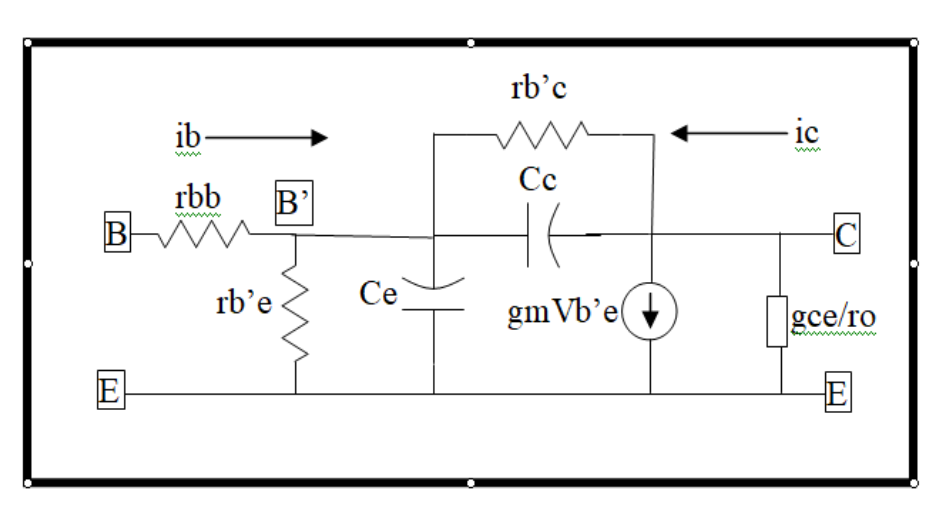The Colpitt’s oscillator is a useful building block that is simple to build using a very few components. However, it is somewhat difficult to design and simulate. Signal Processing Group has recently released a simple Javascript calculator that provides an estimation of the frequency of the design. However, after this calculator is used the user must still “tweak” the design on the board. Please access the calculator at www.signalpro.biz/calculators/resonant_f.htmh
Monthly Archives: November 2021
Hybrid pi model of the bipolar transistor
The hybrid pi model of the bipolar transistor is a popular model used for small signal modeling of the bipolar. A paper released by Signal Processing Group describes the components that constitute the model and presents first order expressions for their calculation. The paper is available for free on the Signal Processing Group website and can be accessed from the “complementary” menu. Please visit. In addition a javascript calculator is planned for release from Signal Processing Group that can be used by a user to make the calculations easier.
The Hybrid Pi model of Bipolar ( and MOSFET) devices
The hybrid Pi model is a popular model used to analyze small signal performance of active circuits based on bipolar and MOSFET transistor and other devices with appropriate modifications. The following are the descriptions of its component parts:
- It has three terminals ( the schematic shows a bipolar model with base, emitter and collector as its terminals. C = collector, B = base and E= emitter.
- rbb is the base spreading resistance. The resistance between the base contact and the internal base of the transistor.
- rb’e is the base to emitter resistance. Represents the base current required to make up for recombination of minority carriers in the base region.
- Ce is the emitter base diffusion capacitance.
- Cc and rb’c represents the Early effect which accounts for the finite collector to emitter output resistance.
- gce/ro represents the output impedance ( conductance) of the device.
This complete model can be simplified as needed for active circuits using these devices.

Colpitt’s oscillator output voltage calculation using ” describing functions”
Colpitt’s oscillator is a popular oscillator circuit which is constructed from an inductor, two capacitors, some resistors, and an active device such as a bipolar or a MOSFET, and generally some trial and error !!! Of particular difficulty is the calculation a priori, of the output voltage of the oscillator. However, a technique using the describing function of a bipolar ( or MOSFET or JFET, IGFET etc) makes it possible to calculate the output voltage to a close estimate. ( Perhaps some optimizing needs to be done). For the uninitiated here is a simple definition of a describing function. Assume you have a non linear device which you would need to analyze, using linear tools. How would you do it? In the time domain it is definitely non linear but if you switch to the frequency domain linear analysis tools can be applied. How? Hit the non linear system with a sinusoid of a particular amplitude and frequency. Since the system is non linear it will generate, at its output, a number of sinusoids. Lets pick the output sinusoid that matches our input frequency and all its associated characteristics ( phase etc). This becomes a describing function. Ignore the rest of the outputs. Then linear analysis tools can be applied to this describing function and results obtained. Please visit our website for more technical info and other information.
